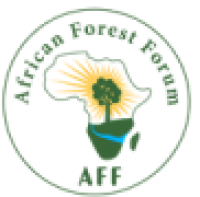Forum Replies Created
-
AuthorPosts
-
-
December 2, 2021 at 8:41 am #406
Christopher Komakech
ParticipantResearch & Development in the following areas recommended
Domestication in Farm forestry/Agroforestry settings where food production is positively impacted (soil enrichment, soil degradation is combated by limiting runoffs etc) using indigenous as well as exotic tree species and should be done with researched-based evidence regarding species invasiveness etc. Acacias (Ind. and exotics), Casuarinas, Eucalyptus species and hybrids, Corymbia species and hybrids
Sustainable management/Silvicultural prescriptions are derived and documented in management guidelines (woodlots for energy as well as wood for carving). KEFRI/JAICA research work in the drylands with Acacia tortilis and Melia volkensii to be applauded and if possible expanded to include other species. In Tanzania, Pterocarpus angolensis seed sourced established in the dryland area by the Government which is showing that domestication of these species is possible.
Policy and regulatory framework needs to be in place and enforcement enhanced.
Coordination and info. dissemination at both national and regional levels (AFF ?)
Demand supply market analysis-Value chain analysis of wood carving/Charcoal at national and regional levels (East Africa, West Africa, Southern Africa). Zambia, Malawi, Mozambique data will be useful especially if shared?
And many more
-
November 26, 2021 at 8:54 am #398
Christopher Komakech
ParticipantNTFPs development and commercialisation will follow the same trends as witnessed in timber products which have supported economies of Countries as well as livelihoods for many years. Both from planted and natural forests. Therefore, addressing some of the challenges will require many approaches which should not only focus on commercial values but also other social and cultural values which are so difficult to quantify in monetary terms. The following listed points may need to be taken on board that may be useful;
1) From the demand and supply side looking at it from subsector development, there will be a need to develop mechanisms that will lead to addressing some of the issues being discussed;
R&Ds will need to be established that will look at ways of improving yield and domestication of priority species in farmlands or agroforestry settings, management, land restoration abilities, fodder for livestock, biodiversity and other uses apart from the production of gums and resinCommunities should be part and parcel in the selection of species of choice which will vary from region to region in different countries
Policies and regulations need to be put in place so that responsible ministries can lead the process
Local institutions (Universities etc) to get involved to train local students in the value chains of these products thereby instituting sustainability of the value chains
It will be more appealing for funders if Women and youth will be the target groups for empowerment
Capacity building will need to be in a place where students work in rural areas with government extension services already established but might need empowerment
Look at other sectors where initiatives like these have failed dismally and propose what has to be done differently to support the production and sales of NTFPs
Institutional arrangements need to be set up for the business of the subsector which should include local farmers (Co-ordination nationally and regionally with strong knowledge and information dissemination mechanisms)
There is a lot commercial forestry sector with similar products being marketed abroad while local population can’t afford the same products when imported back to countries which produce the products but lack mechanisms for value addition
-
November 19, 2021 at 8:24 am #364
Christopher Komakech
ParticipantThe followings are my comments regarding challenges in the development of NTFPs in Africa
1) Failure to recognise NTFPs as a source of livelihood support for majority of rural dwellers and potential to scale up as a formal business that contributes to national economies despite a lot of informal trade going on.
2) We need research to evaluate the value chains and make a proposition to policy makers in monetary terms to see how much is being lost by not formalising the sub-sector
3) There is a lot to be done to educate and sensitized rural communities about the values of the different NTFPs which some are already being marketed intentionally and they are not aware. IPs being generated can make a lot towards improving their livelihood
4) We need policy shifts so that these products become commodities for trade and sources as well as production, processing, packaging etc can be traced. Should be treated just like other agricultural produce
5) We need research and development to boost production both at community and farm levels and that will require shifts in our training in local institutions still stuck in the colonial era structure. Because they were neglected at the time when resources were not dwindling at the current rates due to huge population surge, we need to rethink the way we see things now and going into the future. Rural communities need to be part of the process so that they realised it is being done with them and not for them as is always the case.
-
-
AuthorPosts
